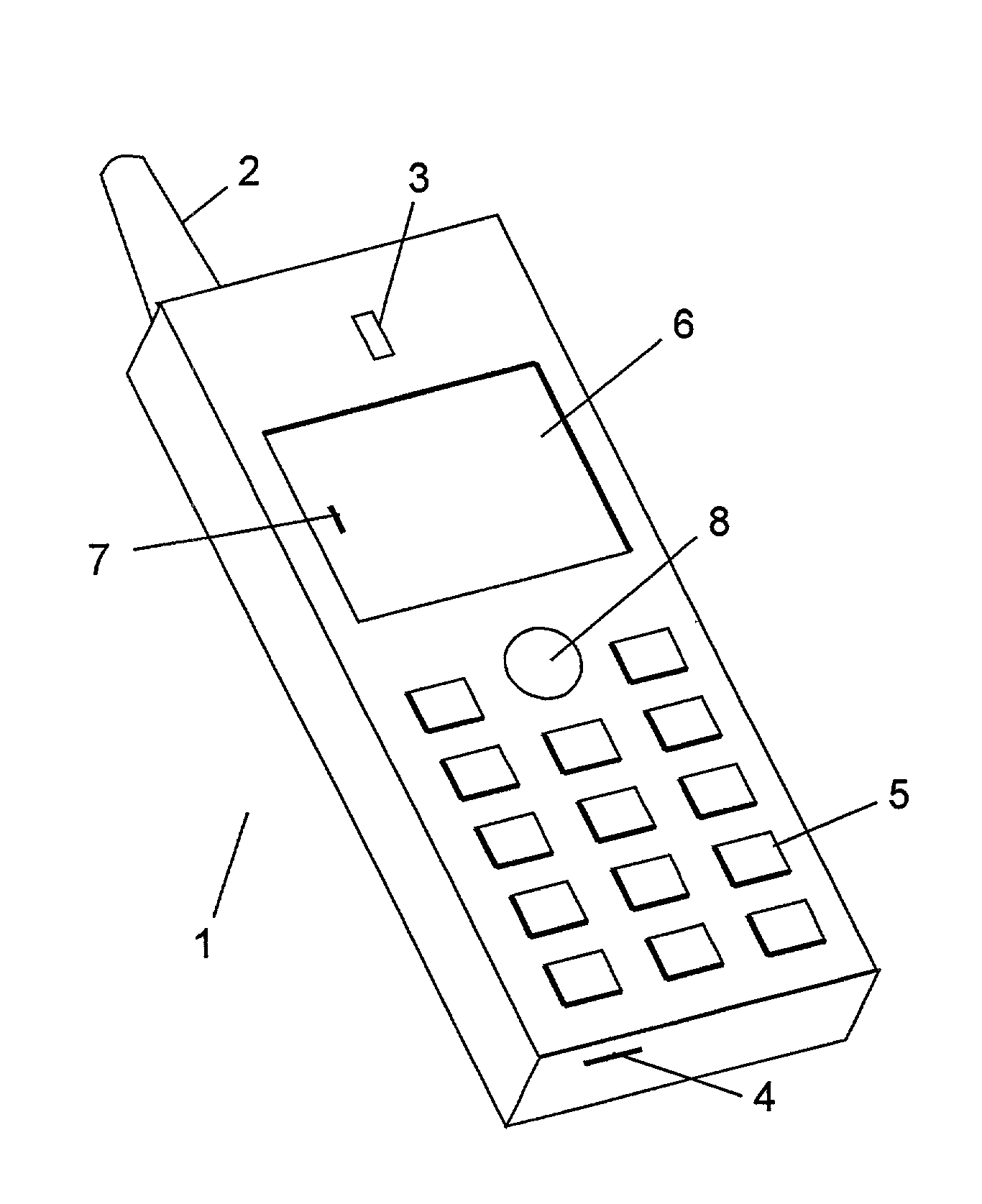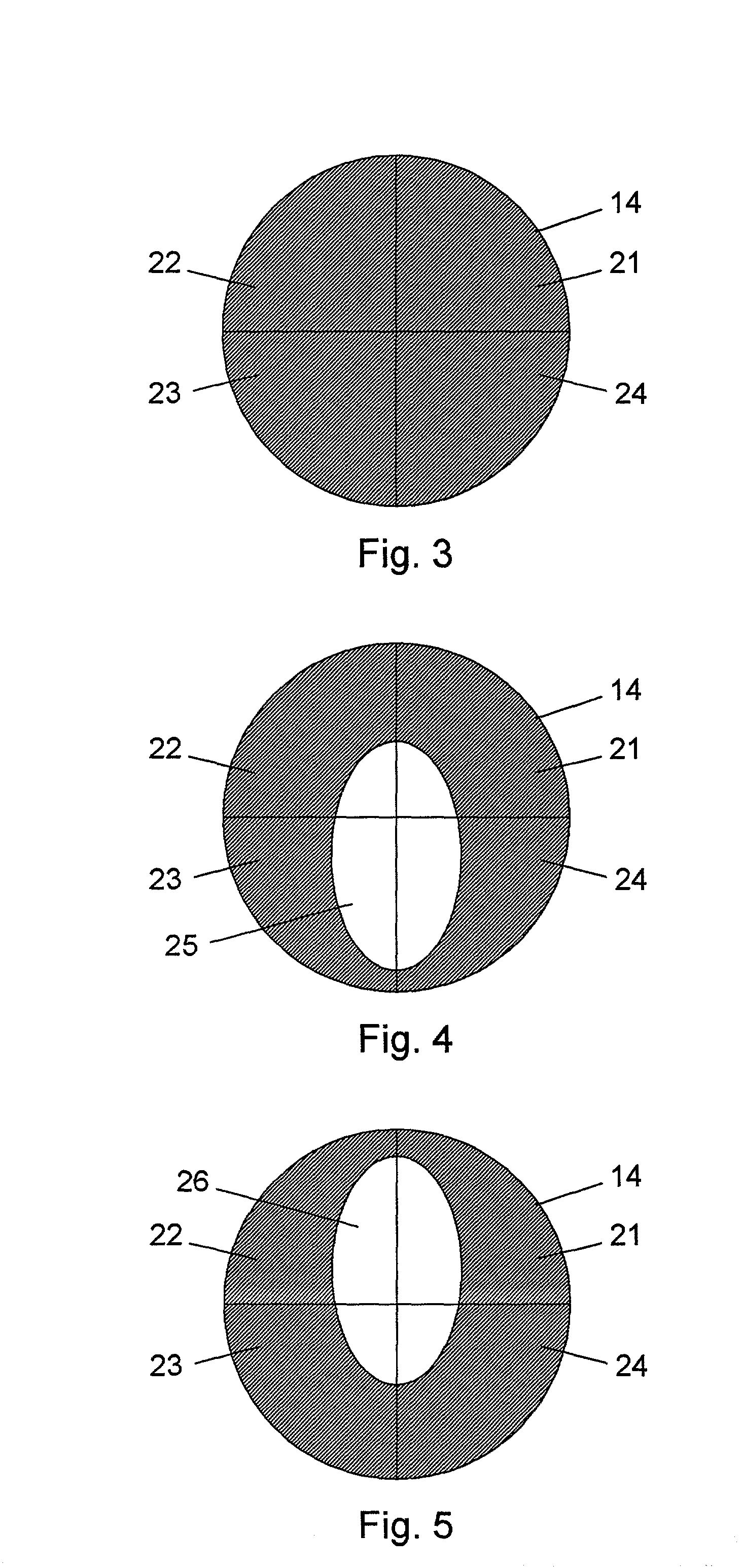Portable radio communications device
a radio communication and portable technology, applied in the field of portable radio communication devices, can solve the problems of user loosening the grip of the device, incompatible with the increasing demand for smaller and smaller devices, and consuming a lot of time, and achieve the effect of convenient operation
- Summary
- Abstract
- Description
- Claims
- Application Information
AI Technical Summary
Benefits of technology
Problems solved by technology
Method used
Image
Examples
Embodiment Construction
[0022] FIG. 1 shows an example of a portable radio communications device, in this case a mobile telephone 1, in which the invention can be used. The telephone has an antenna 2, a loudspeaker 3, a microphone 4 and a number of keys 5. The keys 5 are used for entering telephone numbers, messages, etc. A display 6 is provided for presentation of information to the user of the telephone. This information could be numbers or messages entered by means of the keys 5, or it could be information received by the device through the antenna 2. An example of such information could be a menu from which the user can select a specific item, which is done by moving a cursor or pointer 7 around on the display 6.
[0023] The movement of the cursor 7 is controlled by the cursor control device 8 according to the invention. This device 8 is an optical control device which will be described in more detail below. The optical control device includes a translucent window integrated into the surface of the telep...
PUM
 Login to View More
Login to View More Abstract
Description
Claims
Application Information
 Login to View More
Login to View More - R&D
- Intellectual Property
- Life Sciences
- Materials
- Tech Scout
- Unparalleled Data Quality
- Higher Quality Content
- 60% Fewer Hallucinations
Browse by: Latest US Patents, China's latest patents, Technical Efficacy Thesaurus, Application Domain, Technology Topic, Popular Technical Reports.
© 2025 PatSnap. All rights reserved.Legal|Privacy policy|Modern Slavery Act Transparency Statement|Sitemap|About US| Contact US: help@patsnap.com



